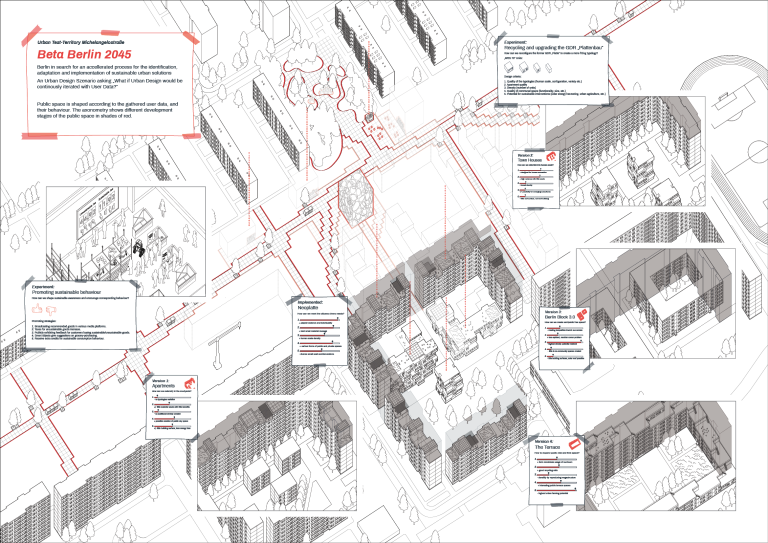For What it’s Worth 2: The Great Transformation
Julia Dorn, Katherine Eynon, Salma Hassabelnaby, Johannes Reinders, Veit Vogel, Johanna Westermann, Shuaiqi Xia, Yiran Zhang, Leonie Ziehmann
beta berlin
This technocrazy themed scenario negotiates global factors that impact national and local behavioural and social frameworks. In our technocrazy world, climate change and climate refugees impose increasing uncertainty and pressure on Berlin. Technological disruption through Artificial Intelligence has rapidly accelerated knowledge and decision making processes with powerful real-time data. Yet our built environment and construction industry remains in the past, caught in a dilemma between “expertocracy” and citizen participation that fails to manage wishes, motivations and possibilities.

As a response to that the German government establishes three test territories in Berlin under the program named “Beta Berlin”. The test territories are considered a possible solution forfacilitating rapid reaction in a time of uncertainty. The scenario requires a new concept for the transformation of urban space in Berlin that can rapidly implement sustainable solutions and enhance resilience, on a local and global level, in all aspects of everyday life.

The test territories of Beta Berlin promote a collaboration of human and A.I. skill sets on the basis of the four evolving levels of contexts and systems. This results in an AI facilitated process that is directed by constraints imposed by the human actors. All inhabitants and neighbours both generate the necessary data for the design process, and establish the basis for goal and constraint setting. Thus, all human actors have direct role in the shaping of their environment.
The agile augmented design process that is facilitated by A.I. “BB” under
the constraints set by the project and experiment teams. “BB” gathers
the required data with the help of the three key elements that function
similar to a nervous system. The “Digital Layer” is comprised of a net of sensors that track situational interactions between human and non-human actors. The “Neuralink Chip” is an implemented device that is mandatory for
every inhabitant of the test-territory. It captures raw emotions to rate the interventions. The “Voting Tool” allows inhabitants to share their opinion that might be different to their emotions.

The spatial program establishes the layers of structure and certainty,
in a context of experimental possibility.



Swarm experimental examples





